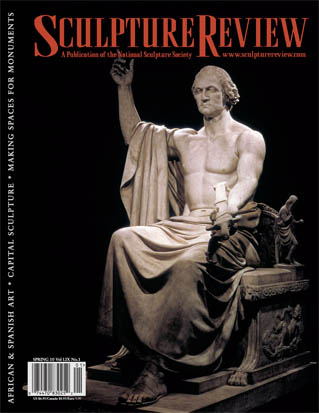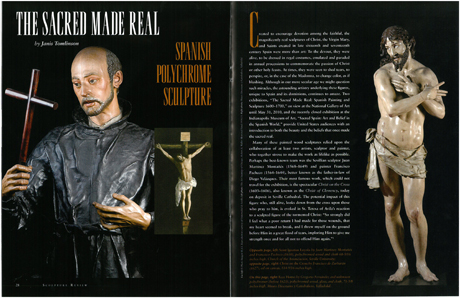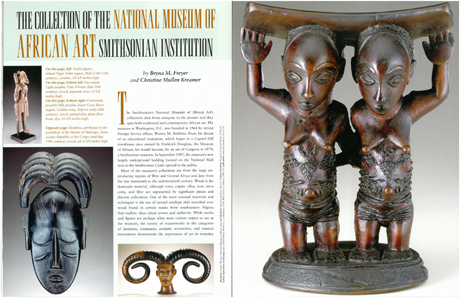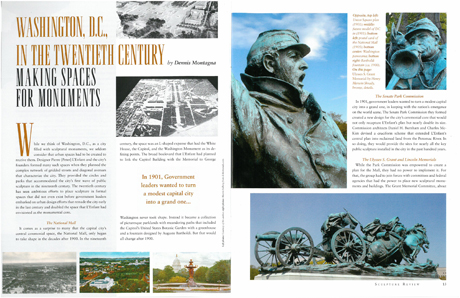
Sculpture in Washington, DC
Features

Created to encourage devotion among the faithful, the magnificently real sculptures of Christ, the Virgin Mary, and Saints created in late sixteenth and seventeenth century Spain were more than art: To the devout, they were alive, to be dressed in regal costumes, emulated and paraded in annual processions to commemorate the passion of Christ or other holy feasts.

The Smithsonian’s National Museum of African Art’s collections date from antiquity to the present and they span both traditional and contemporary African Art.

While we think of Washington, D.C. as a city filled with sculptural monuments, we seldom consider that urban spaces had to be created to receive them. Designer Pierre (Peter) L’Enfant and the city’s founders formed many such spaces when they planned the complex network of gridded streets and diagonal avenues that characterize the city.

Seven years after the United States of America won its independence from Great Britain, Congress finally settled on a permanent location for the capital city. The Residence Act of 1790 designated ten square miles between the Potomac and Anacostia rivers as the home for the federal government.
